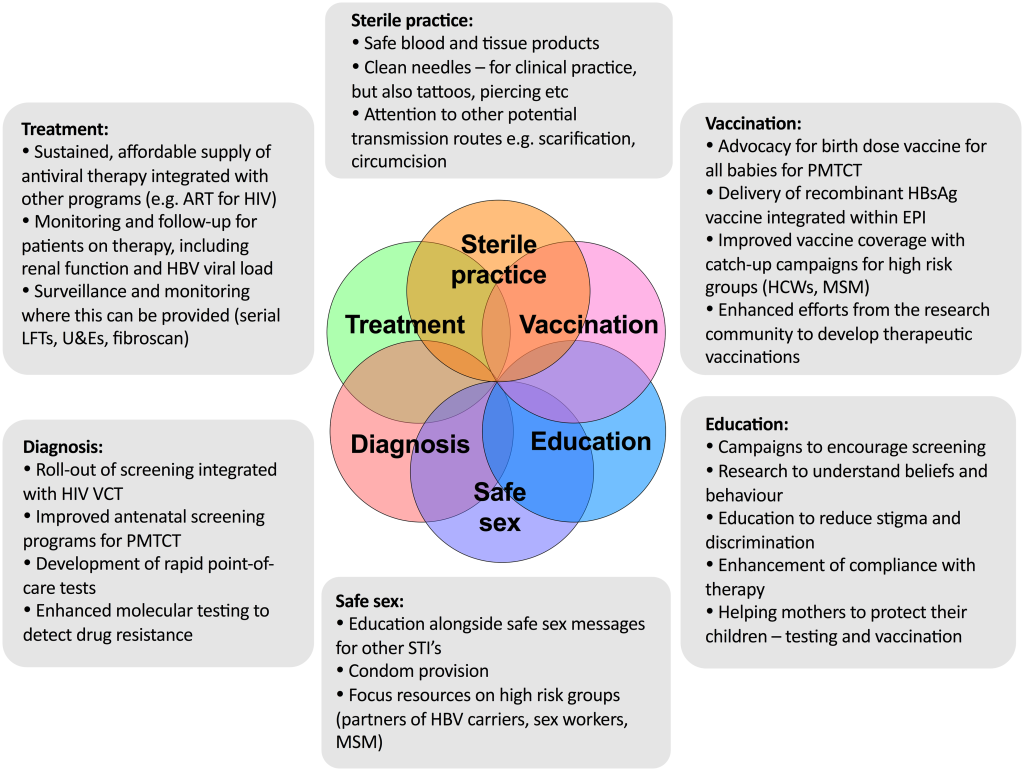
Hepatitis is an infection of the liver which causes inflammation of the liver. The type of hepatitis caused by viruses is known as viral hepatitis. There are five strains of the virus. They are A, B, C, D and E. It can also be caused by other factors such as alcohol consumption, drug use and chemicals.This is known as the non infectious hepatitis.
The liver is the largest internal organ in the human body. It performs such important functions as detoxification of substances which should not be allowed to accumulate in the body. The liver receives blood from the digestive system and processes it, removing toxins and other chemicals like drugs. The liver also plays an important role in the synthesis of certain needed proteins.
As a bye product of its functions, bile is produced in the liver and secreted into the digestive tract and helps to emulsify fats so that they can be properly digested by enzymes. The liver helps to store important vitamins and nutrients.
Besides these, the liver performs other essential functions and all these require the liver to be performing at optimum capacity. Although individuals whose liver has been partly removed can still have their liver perform these important functions, it is imperative that the liver does not get infected to the point of losing its ability to function normally.
Among the important diseases which affect the liver is hepatitis. Though, it can be managed and sometimes resolves on its own, can lead to liver cirrhosis (scarring of the liver) and cancer. In some types of this virus, the infected persons can be asymptomatic, and when the symptoms do appear, the body’s immune system can flush them out of the body. However, due to the seriousness of the conditions which can sometimes result, it becomes important to be able to promptly diagnose the virus and manage it accordingly.
The types of viral virus known are named according to the strains of viruses which causes them. Hence hepatitis A is caused by the type A strain (HAV) of the virus, type B by the B strain (HBV), and the others in that fashion. Hepatitis A, B and C are more common than hepatitis D and E. In fact, hepatitis D only occurs in individuals (not all) who are infected with hepatitis B – its occurrence is aided by the presence of hepatitis B. In the acute form, the symptoms of hepatitis include nausea, abdominal pain, fatigue, malaise, and jaundice. Chronic hepatitis B and C can lead to cirrhosis and liver cancer.
Hepatitis A and E are caused by food or water that has come in contact with infected faeces. Hepatitis B and C are contracted by contact with infected body fluids.

The strategies for the control of the viral virus has largely centred around prevention. For hepatitis A and E, proper sanitation has long been advocated as a way of preventing its spread. The focus on environmental health especially as regards to water can be instrumental to prevent hepatitis E. Avoidance of contact with used needles, razors and other sharp and piercing objects are key in preventing hepatitis B and C. Likewise, proper screening of blood before transfusion, safe sex and sterilization of sharp medical equipment are considered important in preventing spread.
Due to the public health burden they pose, hepatitis B and C have received the most attention. According to the World Health Organisation (WHO), not less than 350 million people are infected with hepatitis B and C in the world. Together, they account for about 90% of deaths from the virus.
The global target of the United Nations as part of the 2030 Agenda for Sustainable Development is to eliminate the viral virus by the year 2030. Treatment and vaccination however remain important gaps to be filled in this quest. A study did lately by the Imperial College London in collaboration with the WHO shows that the disruptions caused by the COVID-19 pandemic has had a huge impact on the progression of the vaccination plan and suggests that this could cause a serious setback in achieving the global target.
In a recent study in Nigeria, it was found out that about 8.1% and 1.1% of the population had hepatitis B and C respectively. This translates to about 19 million people, taking Nigeria’s population to be about 200 million people. As most people who are infected with hepatitis B are asymptomatic, and as such may not be aware they are infected until much later, it has been advocated that adults who visit the hospital for any reason should get screened for the viral virus.
There is no known treatment yet for hepatitis B. Vaccination is the sure line of defence against it. At the moment, there is no available vaccine for hepatitis C, but there are available treatment measures for it. To prevent mother-to-child-transmission, immunisation for hepatitis B has been incorporated into the national routine immunisation programme for children in Nigeria. Data shows that globally, the number of children who were infected with chronic hepatitis B dropped significantly from about 5% before the advent of vaccines to just under 1% in 2019. This is as published by the WHO.
In the light of the prevalence of hepatitis B among adults, particularly of undetected infections, more still needs to be done if the 2030 target must be met. To begin with, there is a need for a well-planned and executed public education and enlightenment. A good number of the citizenry are either unaware of the disease or know about it only on the surface level.
Read Also: Vaccine Diplomacy: China Leads Despite Lingering Concerns
As advocated by the Society of Gastroenterology and Hepatology in Nigeria, adults who visit healthcare facilities should be screened for the hepatitis B virus. This guideline should be strictly adhered to if more of the undetected cases will be found.
In addition to routine immunisation in children, the practice of vaccinating healthcare providers should be continued without fail. This is to ensure that these practitioners, being among those who are highly exposed to the virus, are offered protection against the virus. If the needful is done conscientiously, and barring unforeseen interruptions, the goal of reducing the prevalence of hepatitis B by 90% in 2030 is achievable.
Adebowale Bello
Adebowale Bello is a trained physiologist, public health writer, and a keen observer of global trends.